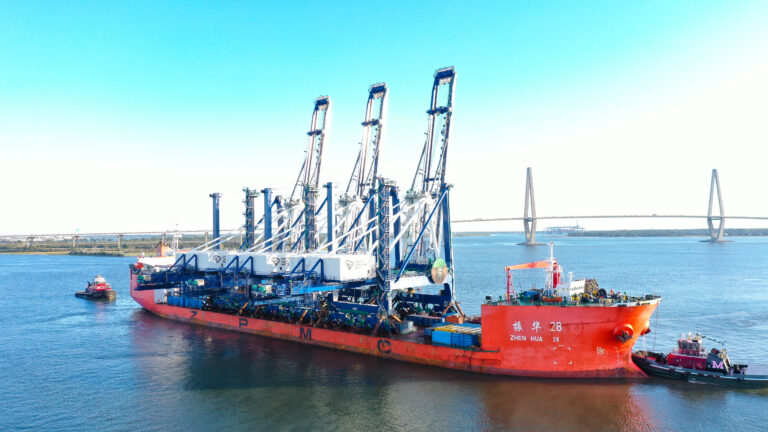In a reversal of a downward trend this year, the Port of Long Beach said that its terminals handled 706,956 TEU of containers in September, a slight 0.8% increase in volume over September 2018. It was the highest amount of container traffic handled in one September in the port’s 108-year history.
The change came before a newly instituted incentive program designed to attract more containers goes into effect.
In the port’s 2018-19 fiscal year, which ended on Sept. 30, preliminary figures show the port handled 7,747,252 TEU, 3.2% fewer than in fiscal year 2017-18.
Long Beach said that an incentive program by the neighboring Port of Long Angeles that went into effect on Sept. 1, 2018, “resulted in incremental cargo volume shifting from the Port of Long Beach to the Port of Los Angeles.”
In response, Long Beach’s Board of Harbor Commissioners approved its own incentive program that went into effect on Oct. 1, 2019. The program rewards container carriers with a payment of $10 per TEU for additional cargo that moves through the port over and above the cargo they handled the prior year, and over and above the general growth in the trans-Pacific trade.
Competition between the two ports remains strong with dueling incentive programs. The Port of Los Angeles has extended its incentive program through June 2020.
Long Beach’s overall September increase in container volumes was due to an increase in exports and empty containers offsetting a decrease in imports.
In September, imports were down 0.7% to 354,919 TEUs, while exports were up 1.4% to 123,215 TEUs. Empty containers moved out of the United States to be reused in the global supply chain rose 2.9% to 228,822 TEUs.
“We saw increased ship calls in September,” said Port of Long Beach Executive Director Mario Cordero. “We’re ready to provide high-quality service to all vessels, though we continue to advocate for an end to the cycle of tariffs to give American businesses the certainty they need to thrive.”
Three new cranes for Port of Charleston
The South Carolina Ports Authority said a ship with three additional ship-to-shore cranes for its Wando Welch Terminal arrived in Charleston. The cranes, manufactured in China by Shanghai Zhenhua Heavy Industries (ZPMC), have 155 feet of lift height. They arrived Oct. 17 aboard the Zhen Hua 28 after a two-month journey.

Wando Welch Terminal currently has 12 ship-to-shore cranes; eight have 155 feet of lift height and four have 115 feet of lift height. An additional four cranes with 155 feet of lift height will be added next year.
The new cranes will remain at Columbus Street Terminal in downtown Charleston for several days before being transported to their permanent home at Wando Welch Terminal in Mount Pleasant. The new cranes will be assembled and commissioned behind the wharf; the cranes will then be moved to begin working ships at Wando Welch Terminal in early 2020.
“These modern cranes are incredibly tall and have a wider reach, enabling crane operators to seamlessly move containers back and forth on 14,000-TEU-and-above vessels,” said Barbara Melvin, the port authority’s chief operating officer.
Combined with other infrastructure investments, including harbor deepening, the ports authority said Wando Welch Terminal will be able to handle three 14,000 TEU ships simultaneously next year.
Protestors disrupt meeting of Utah Inland Port
Deseret News reports that protestors disrupted a meeting of the Utah Inland Port Authorty by blowing whistles.
The authority is seeking to develop an intermodal terminal on 16,147 acres of land in the northwest part of Salt Lake County, but opponents are raising concerns that the development will create traffic congestion and degrade air quality, environment and migratory bird populations.











